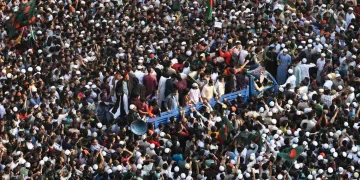While India’s alert levels are kept high on the western border, larger threats are looming on the northern border a la China. A passive but perilous military engagement is on at a most-sensitive region along the northern border, and this can even have the potential to turn into a full-blown war.
The hot-spot is at the tri-junction between India, China and Bhutan, but set in the Bhutanese soil. Sensitively, it’s close to the Siliguri Corridor, the 20 to 40km wide narrow stretch that links the North-East with mainland India. Indian and Chinese troops have amassed, positioned at a kilometre’s distance, after China went on a fresh offensive.
It did an incursion into the Bhutanese territory of Doklam on June 16 and attempted to build a road. With Bhutan calling for help, India had step in with military support and halted the Chinese in their tracks. The Indian soldiers had to form a human chain to stop the PLA. This is time for a showdown between China and India but nothing goes to show that this could not lead to a war.
China is obviously out to prove a few points, as it thinks this is the time it can challenge India, a nation that has less of military power. Notably, the Chinese incursion came just about the time Prime Minister Narendra Damodardas Modi was all set to head for Washington for a meeting with President Trump.
The Chinese action is also seen as an affront to India in the context of the fact that Bhutan has been getting its strategic military cover from India. So, to offend Bhutan is also to test India’s patience. In the event of a weakness in response, the message will be loud and clear that India is not in a position to defend Bhutan, and that a powerful China can be Bhutan’s alternative port of call.
The offensive also forms part of the frequent browbeating by the Chinese along the Indian border areas, even as the red nation is keeping large tracts of Indian soil both on the western and eastern sectors of the border since the 1962 war. China keeps encircling India for the past few years, setting up military bases in the Bay of Bengal, the Indian Ocean and the Arabian Sea, by courting nations in the region.
Its giant One Belt One Road (OBOR) initiative is seeing almost all nations in the region rubbing shoulders with China, even as the essentially Chinese China-Pakistan Economic Corridor (CPEC) project is making its way through Pakistan-Occupied Kashmir, which India claims as its own. India’s refusal to join hands with China in both these projects, despite invitations from Beijing, is seen by some as a diplomatic blunder – something that India cannot “afford” to do at this point of time.
At best, what India can do to undercut the Chinese initiative is to keep India’s markets away from this commercial highway. But, through these initiatives, China has proven a point already: it isolated India from the rest of its neighbours. Even Nepal is part of the Chinese initiative. Nepal, it may be mentioned, had been treated very badly by the Modi govt. in the recent past by an India instigated economic blockade.
It’s alright for the Modi government to make economic reforms like the GST, but what’s of paramount importance is of protecting the nation’s sovereignty. It involves meaningful diplomatic initiatives to ensure a level playing field, both in the region and at the global stage.
China is clearly cut up with India over our attempts to get closer to the US. India can decide who its friends should be, and China need not dictate to us. But, what is also evident of late is that the US, under President Trump, is edging closer to China even as geopolitical realities put limits on such engagements. It goes to show India needs to do a diplomatic balancing act that would help promote national interests. Sadly, Modi has utterly failed in his diplomatic efforts due to lack of skills.
Despite the several foreign visits by PM Modi, nothing goes to show India’s relations with the rest of the world is improving or that India stands to count better among the comity of nations. Blaming the previous Congress government alone will not help. Nor should this be the way forward.
This government is in power for over three years now, and what is left of its term is less than two years. What is evident today is an increasing isolation of India even at the regional level. India hardly has any friends, while Pakistan is doing a fine balancing act between both the US and China, and getting closer even to Russia in some respects. Indian diplomacy is seen as a failure in many respects; it could be worse than that of the UPA periods.
It would appear that India’s foreign policy objectives are focused largely, somewhat exclusively, at neutralizing Pakistan whereas it is not giving adequate attention to larger threats from China. China is a much bigger player, and more mischievous than Pakistan. It’s time to de-focus on Pakistan to an extent, not largely but adequately, and re-focus on China to a larger extent.






































